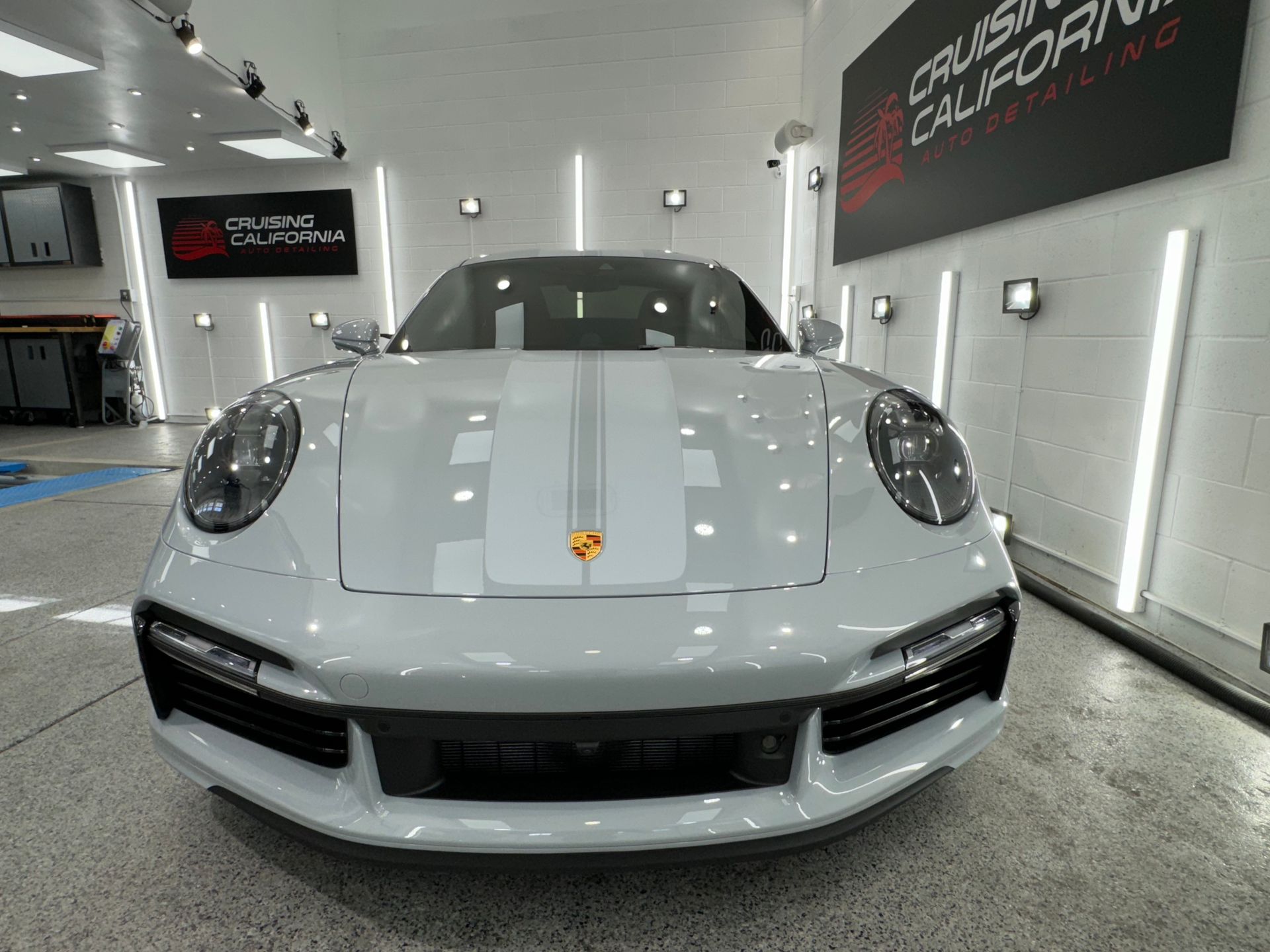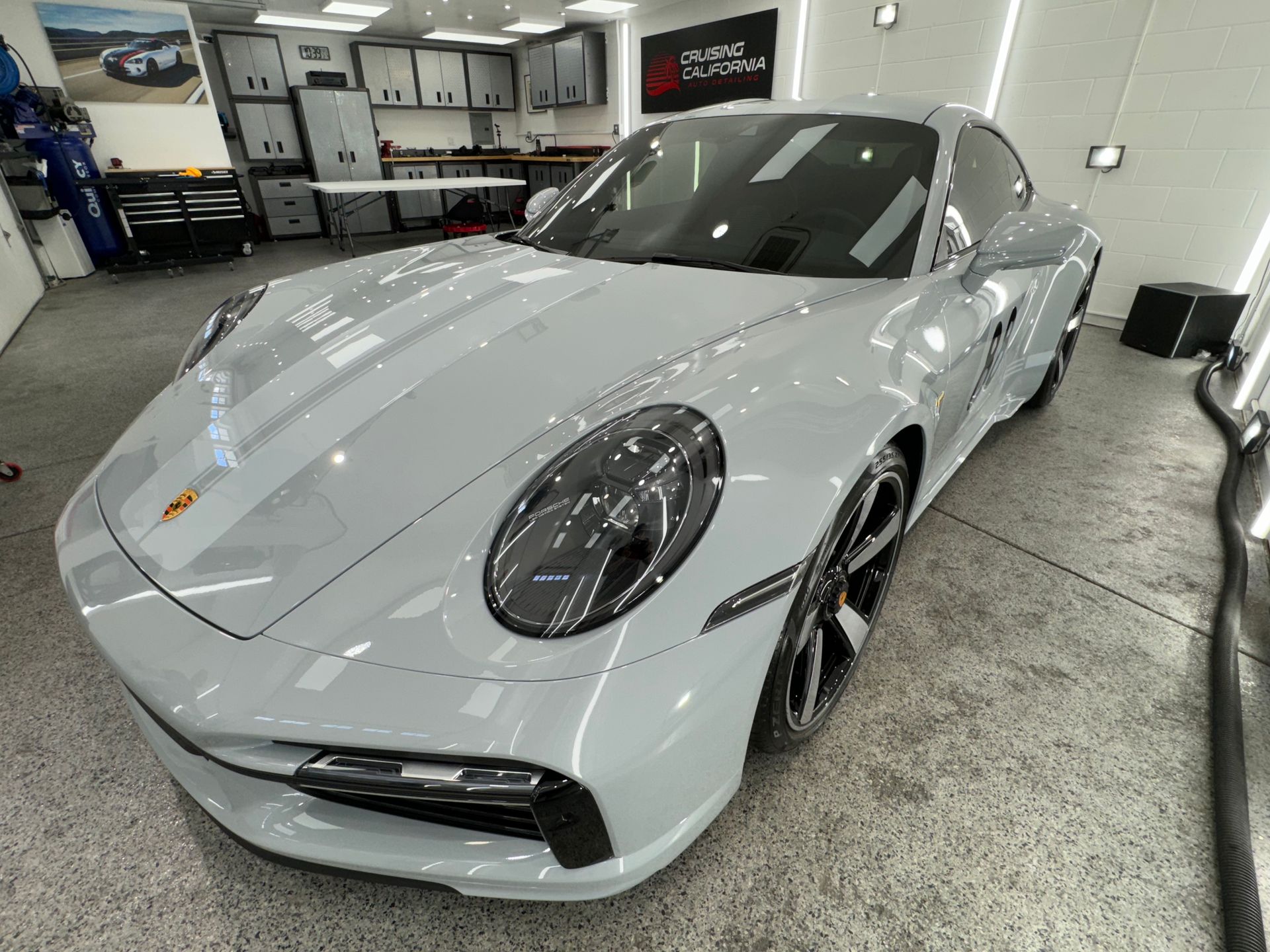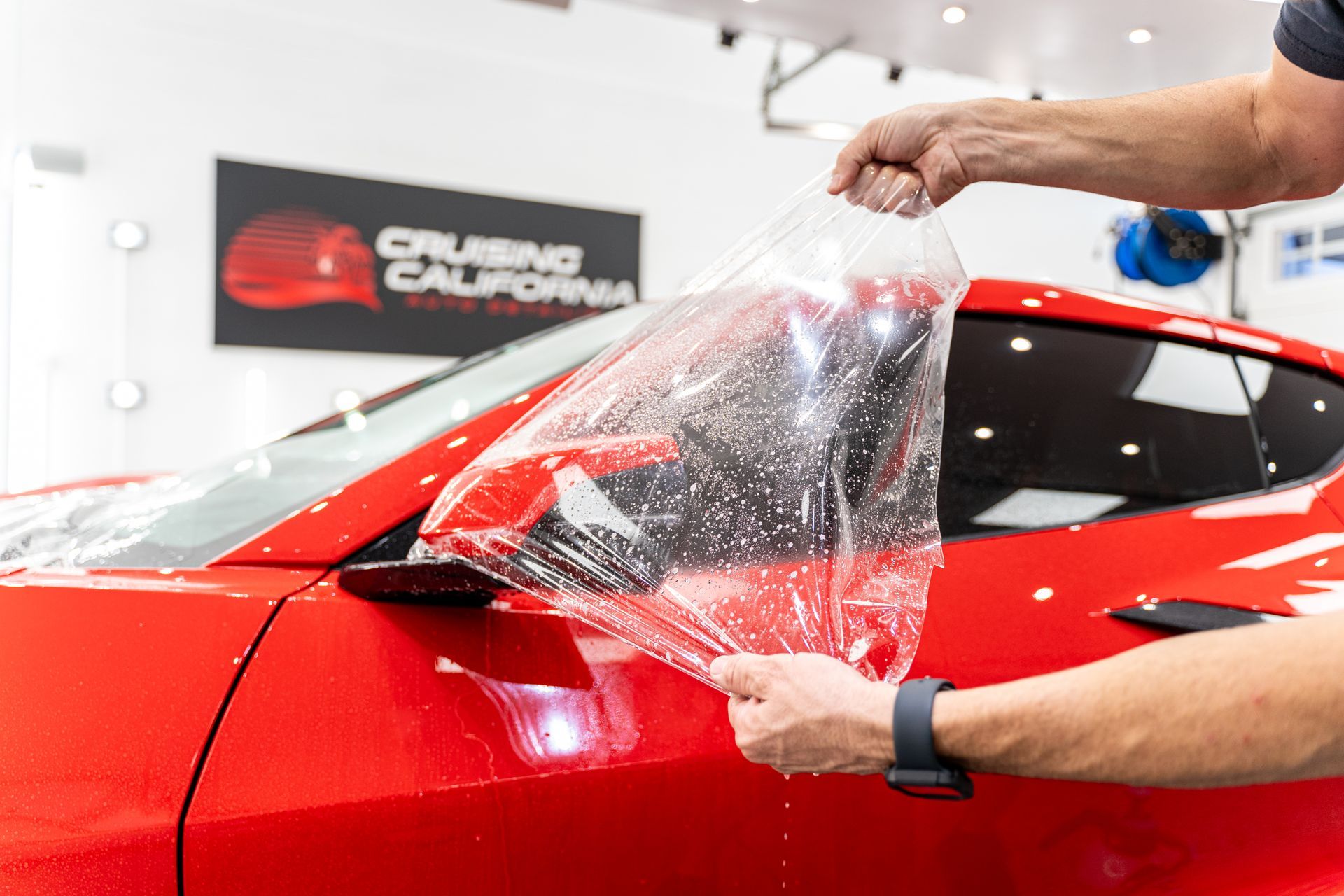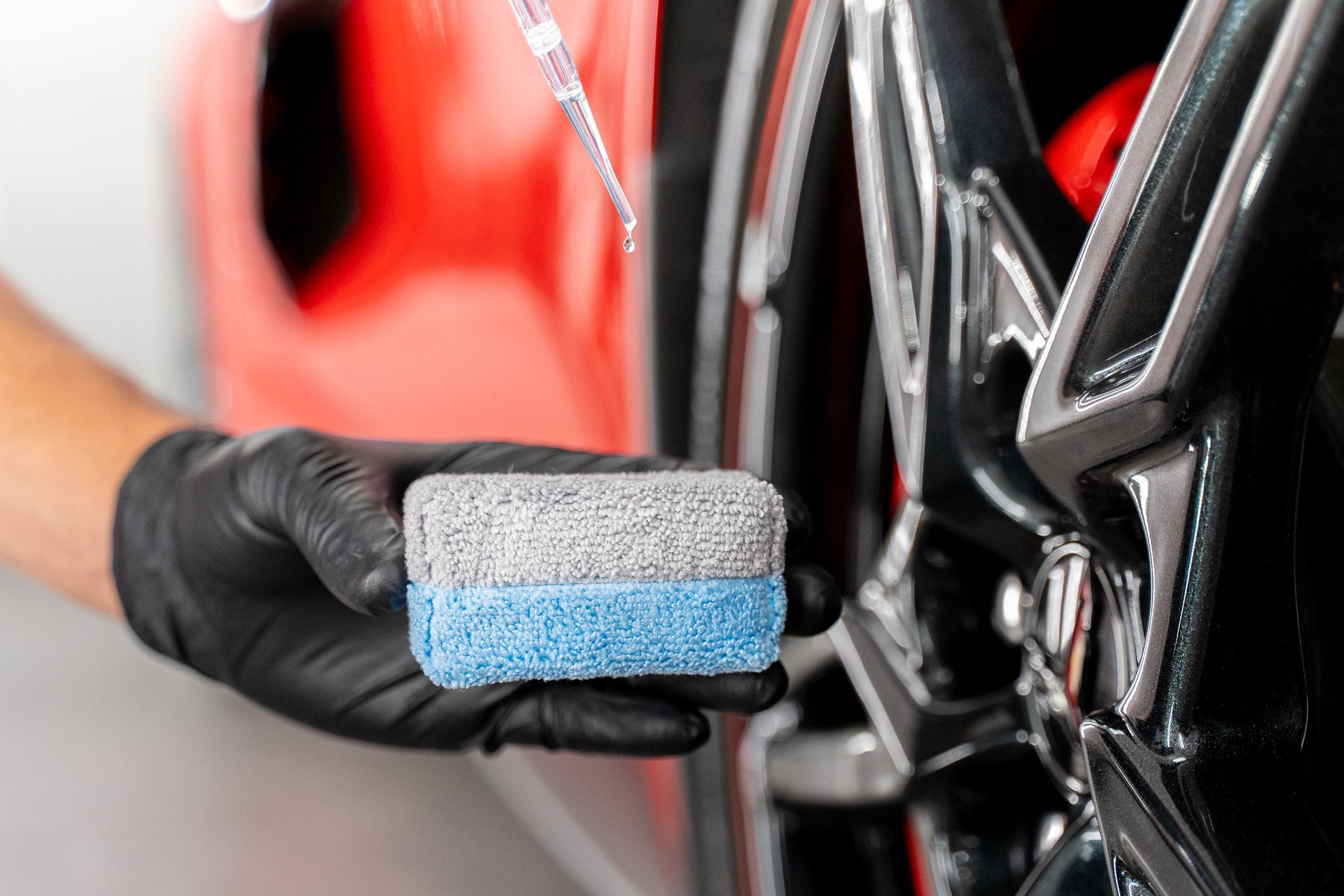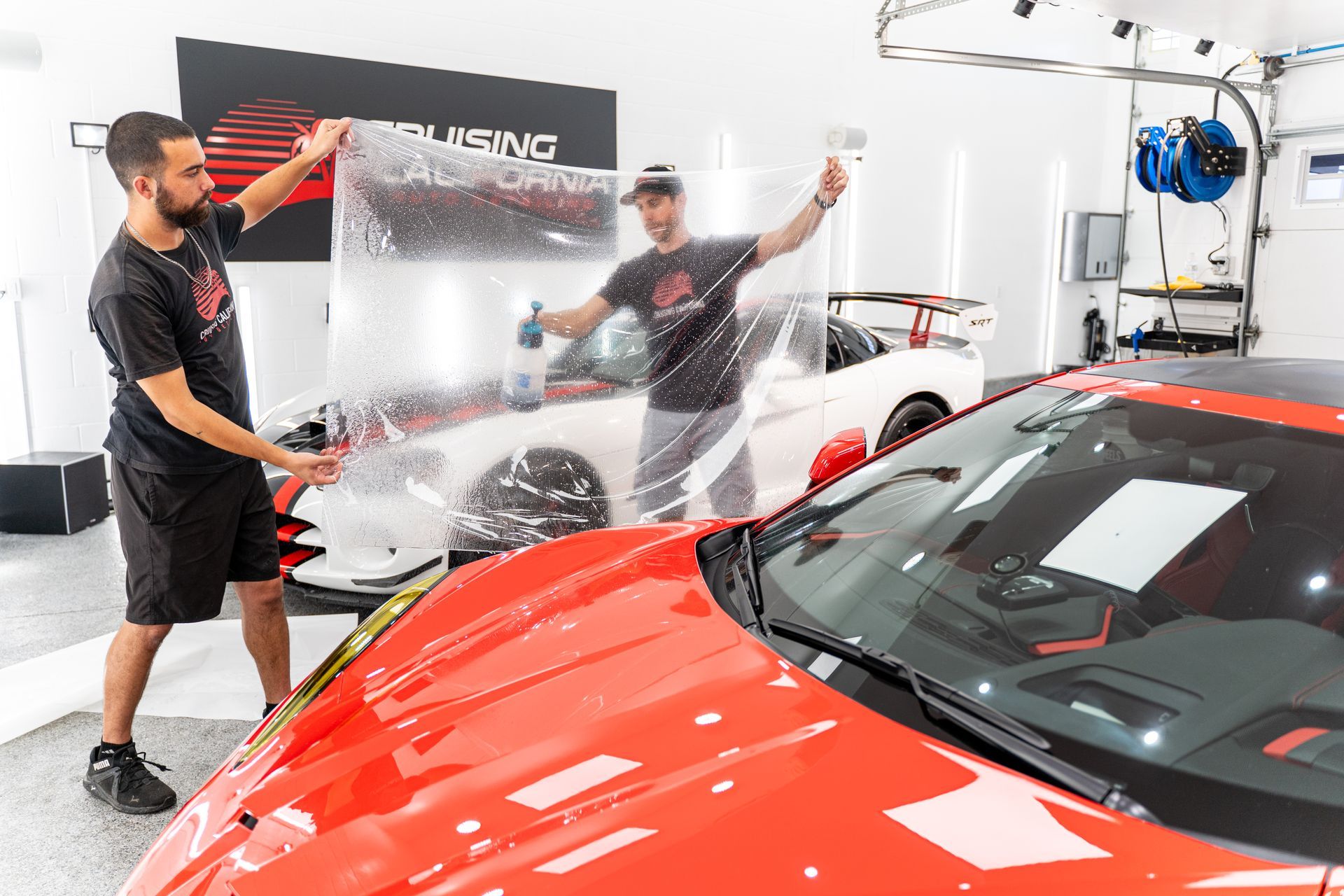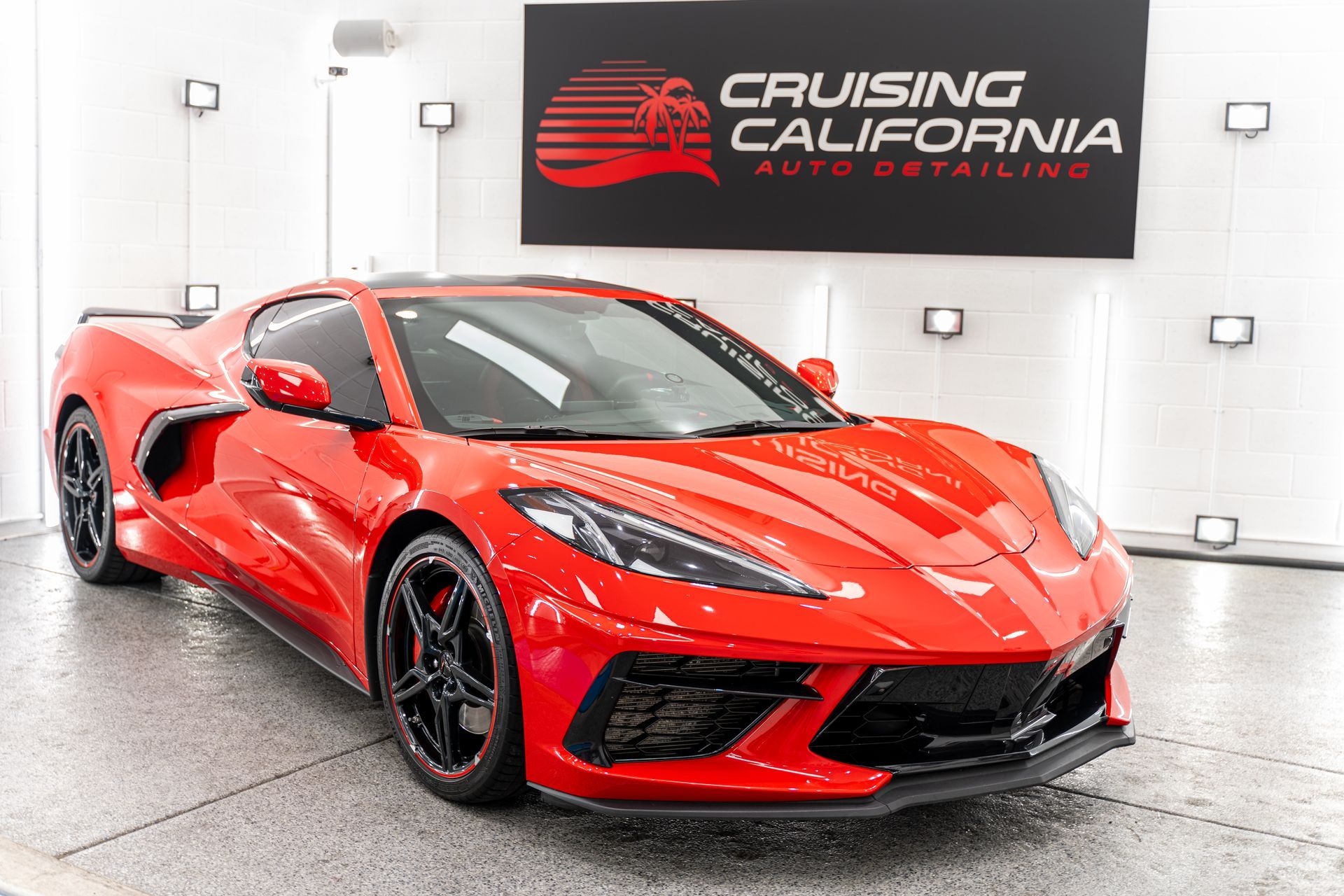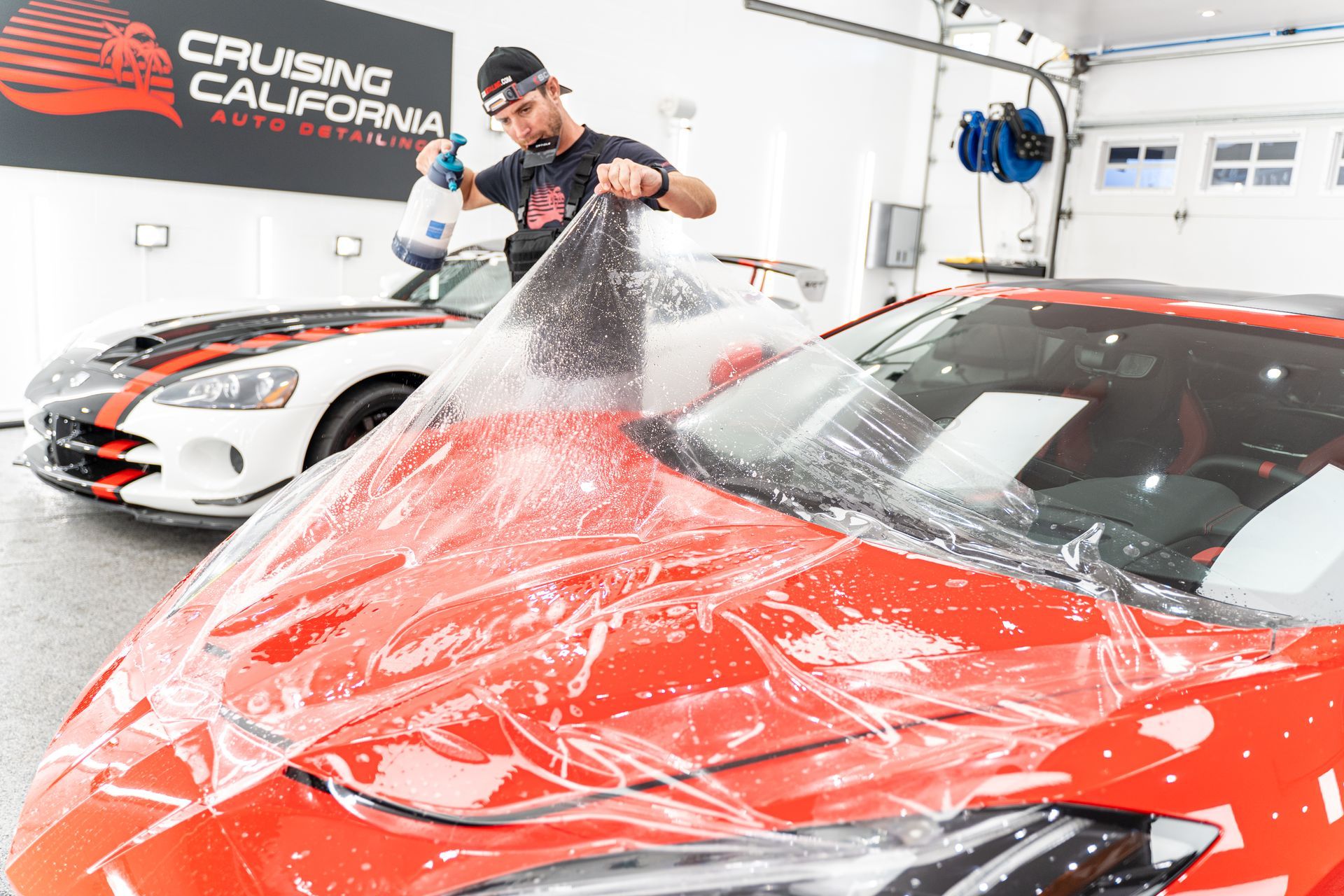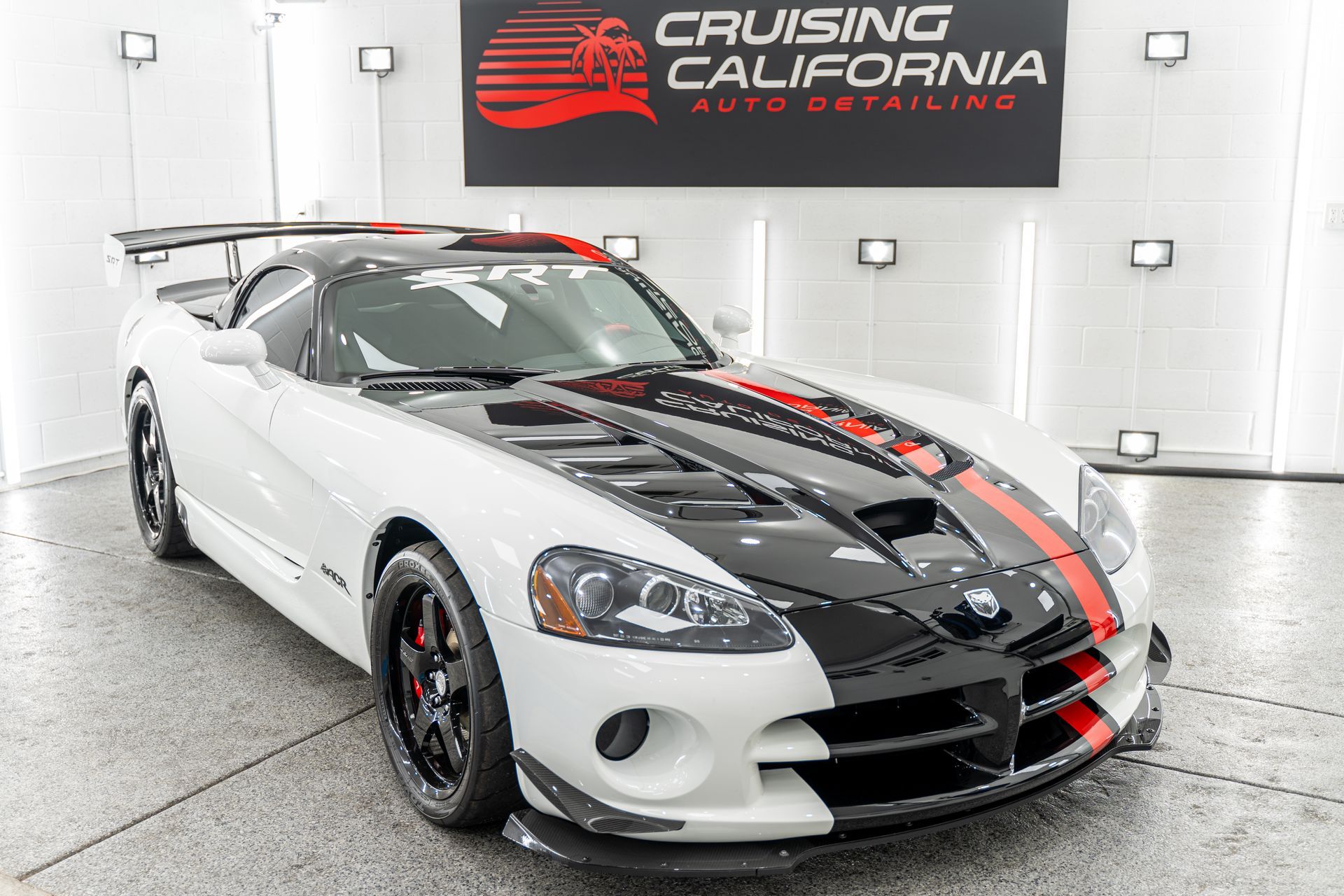Ceramic Coating vs. PPF: Which Vehicle Protection Option Is Right for You?
When it comes to protecting your vehicle, many car owners find themselves torn between two popular options: ceramic coating and paint protection film (PPF). You might be asking yourself, "Which one is better for my car?" This is a common dilemma because both solutions bring unique benefits to the table, but they cater to different needs. Understanding the ins and outs of each will help you pick the right one for your cherished ride. Let's dive into what makes ceramic coatings and PPF stand out in the world of vehicle protection.
Ceramic coating provides a hydrophobic layer that enhances gloss, resists chemical stains, and requires less maintenance, while paint protection film (PPF) offers robust physical protection against scratches and impacts with self-healing properties. Choosing the right option depends on your specific priorities: if you want long-lasting shine with easier cleaning, opt for ceramic coating; if you seek maximum defense against physical damage, PPF would be more suitable.
Key Differences Between Ceramic Coating and PPF
Understanding how these two protection options differ is crucial in making an informed decision about which best suits your vehicle's needs. To start with, the composition and application process of each product significantly set them apart.
Composition and Application
Ceramic coatings consist of liquid polymers that, when applied, chemically bond with your car's paint surface. This bond creates a strong hydrophobic layer that repels water and prevents dirt and grime from sticking easily. It's similar to the way rain beads on a freshly waxed car and rolls off effortlessly. The application typically takes several hours and requires meticulous prep work to ensure the surface is clean, polished, and free from imperfections before any coating can stick properly.
Conversely, paint protection film (PPF) is made from a thicker polyurethane film that adheres to the exterior of the vehicle, serving as a physical barrier. When installing PPF, skilled professionals meticulously cut and fit the film over specific areas, providing superior coverage against external elements like scratches or small rocks that may chip the paint. While both options need skilled application for optimal results, PPF is generally more forgiving during installation because it can be adjusted post-application if necessary.
Protection Capabilities
Moving on to their protective capabilities, this is where the differences really shine. Ceramic coatings are renowned primarily for their resilience against UV rays, oxidation, and light chemical stains. They enhance your car’s glossiness while making cleaning more manageable, as they create a slick surface where dirt finds it hard to settle. However, it's important to note that while ceramic coatings excel in preventing chemical damage, they fall short in safeguarding against physical impacts such as rock chips or deep scratches. This is where paint protection film takes the lead.
PPF provides robust defense against chips, scratches, and even minor abrasions thanks to its thickness. What’s more fascinating is its self-healing property; when exposed to heat—like during a sunny day or from a warm engine—minor scratches may disappear as the film returns to its original state. This unique quality can be remarkably reassuring for vehicle owners who frequently navigate through harsh conditions. Choosing between ceramic coating and PPF ultimately comes down to understanding your vehicle’s specific protective needs.
Considerations before Choosing
As you weigh your options, think about how you use your car and under what conditions it will be exposed: Do you drive in city traffic where scratches are likely? Or perhaps your concern lies more with maintaining that glossy finish amidst sun exposure? Your answers might guide you toward one option over another or even suggest using both for maximum protection.
Recognizing these key differences empowers you with information essential for safeguarding your vehicle while enhancing its appearance splendidly over time. Whether opting for the advanced chemical resistance of ceramic coating or the formidable physical barrier provided by PPF—or even combining both—your choice plays an integral role in maintaining your vehicle's integrity and aesthetics for years to come. With a clearer understanding of these protective measures, it's time to explore the advantages and drawbacks of each option in greater detail.
Pros and Cons of Ceramic Coating
Pros
- Enhanced Gloss and Shine: Ceramic coatings provide a remarkable deep, mirror-like gloss that transforms the car’s paint into a stunning visual spectacle. The shine becomes especially noticeable when your vehicle is under sunlight, resembling a polished, high-end marble countertop. Beyond aesthetics, this enhanced appearance boosts your vehicle's overall value and makes it stand out wherever you go.
- Hydrophobic Properties: One of the most practical advantages of ceramic coatings is their hydrophobic nature, which causes water to bead up and roll off the surface effortlessly. This makes everyday cleaning much simpler, as dirt and grime don’t adhere as easily. Instead of spending hours scrubbing your car, you can simply rinse or lightly wipe it down, saving both time and effort while keeping your car in pristine condition.
- Protection Against Elements: Ceramic coatings excel in protecting your car from environmental damage. They block harmful UV rays, reducing the risk of paint fading and oxidation, even under prolonged sun exposure. Additionally, they form a barrier against acidic substances like bird droppings, tree sap, and acid rain. These can cause permanent damage to unprotected paint, but ceramic coatings help shield against such hazards, preserving your car's vibrant color for years.
Cons
- High Initial Cost: While ceramic coatings offer long-term protection, the upfront investment can be significant. A professional application typically costs between $1,000 and $3,000, depending on factors like the size of your vehicle and the specific product used. This price tag can be daunting, but many car enthusiasts view it as a valuable investment that reduces future maintenance expenses and protects their car’s resale value.
- Limited Scratch Resistance: Although ceramic coatings add a durable layer to your car’s surface, they don’t provide full protection against major scratches or chips caused by rocks or other debris. They are primarily designed to guard against light, superficial scratches rather than more severe impacts. Drivers who often traverse rough terrain or highways may need to consider additional protection methods to address this limitation.
- Ongoing Maintenance Requirements: To retain the hydrophobic and protective properties, ceramic coatings require periodic maintenance. This involves careful washing techniques and occasional touch-ups to ensure the coating continues to perform optimally. Unlike a “set it and forget it” solution, ceramic coatings demand attention to detail, which might not appeal to everyone. Professional installation is often necessary for the initial application, further adding to the overall cost and complexity.
Pros and Cons of PPF
Pros
- Superior Physical Durability: PPF acts as a tough, resilient shield that absorbs impacts from rocks, road debris, and minor scratches. This makes it particularly effective for protecting vulnerable areas like the hood, bumper, and side mirrors. If you frequently drive on gravel roads, busy highways, or other high-risk environments, PPF ensures your vehicle remains unblemished, preserving its original look and reducing the likelihood of expensive repairs.
- Self-Healing Technology: One of the standout features of PPF is its self-healing capability. When exposed to minor scratches or swirl marks—such as those caused by brushes, bushes, or daily wear—the film uses heat from sunlight or your engine to repair itself. This means small imperfections fade over time, leaving your car’s exterior looking polished and flawless without requiring additional effort on your part.
- Ease of Removal and Replacement: Unlike ceramic coatings, which bond permanently to your car’s paint, PPF can be easily removed without damaging the underlying surface. This flexibility allows you to replace worn or damaged sections of the film rather than reapplying an entirely new layer. It’s especially advantageous for high-impact areas like the front bumper, where chips and scratches are more frequent, offering a practical and cost-effective solution over time.
Cons
- Risk of Yellowing Over Time: Low-quality or improperly installed PPF can become discolored after prolonged exposure to sunlight, causing a yellowish tint that detracts from your car's appearance. While premium PPF materials are engineered to resist yellowing, they come at a higher cost. It’s crucial to invest in high-quality film and professional installation to minimize this risk and ensure long-lasting clarity and performance.
- High Upfront Investment: The cost of PPF installation can range from $2,000 to $10,000, depending on the size of the vehicle, the coverage area, and the quality of the film. While this initial expense may deter some buyers, it’s important to factor in the potential savings from reduced paint repair costs over time. For drivers who prioritize physical protection, the long-term benefits often outweigh the upfront costs.
By thoroughly assessing these pros and cons, vehicle owners can make informed decisions about which option—ceramic coating or PPF—best aligns with their driving habits, budget, and desired level of protection.
Making the Best Choice for Your Vehicle
The ultimate choice between ceramic coating and paint protection film (PPF) lies in understanding your lifestyle and vehicle usage. For those who see their car as a symbol of pride, the glossy charm of a ceramic coating may be most appealing. This option enhances the paint's depth and shine while offering convenient maintenance, as its hydrophobic properties make it easier to wash off dirt and grime. Imagine driving a car that practically shines under the sunlight, turning heads wherever you go—that’s what ceramic coatings can provide if aesthetics are your primary concern.
Conversely, it’s important to consider protection against physical threats too. If you frequently navigate gravel roads or park in congested urban environments, PPF might be the superhero your vehicle needs. Its robust barrier shields against rock chips, scratches, and other potential pitfalls of daily wear and tear. For instance, a family SUV that sees a lot of action—like weekend road trips or running errands through busy streets—would benefit immensely from this heavy-duty layer of defense. Picture the peace of mind you’d have knowing that minor bumps and scrapes won’t lead to costly repairs down the line.
However, while weighing these options, think about the long-term commitment involved with each choice. Ceramic coatings usually require periodic upkeep—like washing with specially formulated products—to maintain their hydrophobic properties and overall effectiveness. Meanwhile, PPF installation can be demanding on your budget and requires professional installation to ensure optimal performance. The initial costs can range significantly; for example, while ceramic coatings typically sit around $500 to $2,000, PPF can soar higher—from $1,500 up to even $7,000 depending on quality and coverage area.
So how do you choose? Start by evaluating where your vehicle spends most of its time and how you use it. Do you garage your car? Frequently navigate rough terrain? Or maybe you’re simply looking for a standout appearance without all the fuss? Consider these factors carefully along with your budget constraints before making your choice. The right decision becomes clearer as you align your needs with the distinct benefits each product offers. Whether prioritizing aesthetic brilliance with ceramic coating or ensuring durability with PPF, investing in either option is a step toward protecting your vehicle long-term while maintaining its allure on the road.
As we assess further considerations regarding vehicle protection solutions, expert recommendations can shed light on which path might be best for you moving forward.
Why Experts Recommend Both Ceramic Coating and PPF
Protecting your vehicle's paint is an essential investment, and professionals in the automotive detailing industry often recommend using both ceramic coating and paint protection film (PPF) to achieve optimal results. While each solution offers unique benefits, combining them creates an unparalleled level of protection, durability, and visual appeal that stands out among other options. Rather than choosing between ceramic coating and PPF, many detailing professionals advocate for combining the two to enjoy the best of both worlds. This hybrid approach leverages the unique strengths of each technology:
- PPF for High-Impact Areas: Applying PPF to areas like the front bumper, hood, and side mirrors protects these vulnerable zones from rock chips, scratches, and other physical damage.
- Ceramic Coating for the Entire Vehicle: A ceramic coating is applied over the entire car, including on top of the PPF, to boost gloss, hydrophobicity, and UV resistance. This combination makes the PPF easier to clean and helps it last longer while maintaining a cohesive, glossy finish across the entire vehicle.
This expert-recommended strategy delivers comprehensive protection and aesthetic appeal, ensuring your vehicle looks stunning while staying safe from environmental and physical hazards. By combining PPF and ceramic coating, you get a powerful, all-in-one solution tailored to your car's needs. Ceramic coating enhances the visual appeal and makes maintenance easier, while PPF protects against road debris, scratches, and impacts. Together, they offer long-term value, preserving both the appearance and integrity of your vehicle.
Protect Your Investment with Expert Ceramic Coating and PPF in El Cajon, CA
When it comes to preserving the beauty and integrity of your vehicle, trust the experts at CCA Detailing & Ceramic Coating | PPF. Our top-tier ceramic coating and paint protection film (PPF) services offer unmatched protection against the elements, road debris, and environmental contaminants. Whether you're looking for long-lasting shine or a durable shield for your vehicle's paint, our skilled team in El Cajon, CA, has you covered with premium products and precision application techniques. Let us help keep your car looking its best, all year round.



